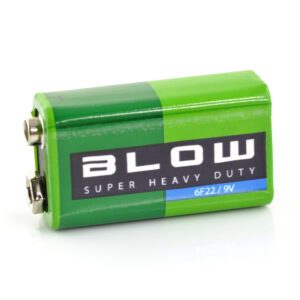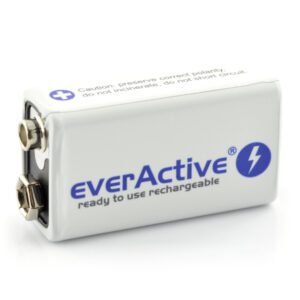Table of Contents:
How much can you say about a nine-volt battery?
It turns out that quite a lot.
It’s hard to imagine today’s electronic devices without its contribution.
Zinc-carbon 6F22 9V and similar batteries remain an important source of power around the world.
Just… what does similar mean?
A global look at zinc-carbon batteries
In 2022, the global zinc-carbon batterymarket
was valued at $1 billion 460 million. It is projected to reach $945.4 million by 2029, with an average growth rate of -6.0% over the forecast period. The impact of COVID-19 and the war in Ukraine was taken into account when estimating the market size. Key players in the global zinc-carbon battery market include 555BF, Energizer Batteries, Spectrum Brands, Sonluk and Panasonic. The world’s top five manufacturers hold a share of more than 40%. The Middle East and Africa is the largest market, with a share of more than 20%, followed by North America and Europe – both continents/regions have a share of more than 30%. In terms of product, AA size is the largest segment, with a share of more than 40%. In terms of applications, flashlights are the largest segment, followed by broad entertainment.
Battery designations
Designation “6F22” refers to the battery marking system that was used to identify its various types.
The new version of the standard used since 1990 uses “R” and “P” shape designations, where P includes the earlier F and S, but the designation of the 9-volt 6F22 battery is still encountered, used, searched on the web and… sometimes causes considerable confusion.
Non-dischargeable 9-volt lithium batteries are often still labeled as 6F22 batteries, even though they are based on lithium-manganese chemistry, which offers good capacity and allows for strong discharge currents, sometimes up to or even more than 1 A.
Zinc-carbon 6F22 9V batteries is, however, the oldest type of battery, which sets certain standards for this size of battery, including a nominal output voltage of 9.0V.
The first digit (6) determines the number of cells – in this case it is six flatcells, which is what the designation with the letter (F), from flat, tells us.
In summary, this is a rectangular zinc-carbon battery consisting of 6 flat cells in size 22 – equivalent to a PP3 or transistor battery.
However, here the troubles do not end.
For example, both the battery 6F22and the 6LR61 battery are both rectangular 9V batteries, but the 6F22 battery is based on zinc-carbon chemistry, and the 6LR61 battery is based on alkaline chemistry.
We put these two types side by side for one more reason – as batteries 6F22 tend to leak and have a relatively short life span, 6F22 9V zinc-carbon batteries are increasingly being replaced by 6LR61 9V alkaline batteries.
All these are examples of IEC nomenclature, in which batteries were coded R20, 4R25X, 4LR25-2, 6F22, 6P222/162, CR17345 or LR2616J.
The letters and numbers in the code indicate the number and chemical composition of the cells, shapes, dimensions and number of parallel paths in the assembled battery.
It’s also any modifying letters that were deemed necessary in light of the already expanding nomenclature mess at an alarming rate.
A multi-section battery (two or more voltages from the same package) will have a multi-section designation.
6F22 battery cells
Prior to October 1990, round links were designated by a sequential numerical size code from R06 to R70, for example, R20 is a “D” link size or ANSI size “13.” Since October 1990, round cells have been systematically numbered based on their diameter and height.
Primary cells with a diameter or height greater than 100 mm are marked with a diagonal “/” between the diameter and height.
The electrochemical system is even more problematic – the first letter specifies the chemical composition of the battery, which also implies the voltage rating.
IEC battery definitions often specify the negative electrode first.
Let’s look at what the code F implies – negative electrode lithium, organic electrolyte, positive electrode iron (II) sulfide, nominal voltage 1.5V.
And yet, in a battery, 6F22 means only flat cells.
It is enough to consider one designation as another and what was meant to denote shape causes an avalanche of confusion.
Despite attempts to standardize battery designations by organizations such as ISO or the IEC and ANSI systems, there is still a lack of uniform labeling standards around the world.
9V batteries
Now that we’ve got the tensions associated with the markings out of the way, let’s deal with the voltage of the batteries. The 9V battery was introduced to the market in the 1950s. In the 1970s. It was a response to the need to provide high voltage in a portable and easily accessible form.
Initially carbon batteries were used, and later alkaline and lithium batteries began to be used for better performance and longer life.
Where do you find them?
They are commonly used in smoke and carbon monoxide detectors as a backup power source.
Their portable form factor and stable voltage make them an ideal choice for these devices.
Many radio wireless microphones use 9V batteries as a power source.
They provide enough power to keep the microphone in operation for a long time.
9V batteries are also used in many alarm clocks and radio alarm clocks.
High voltage and long-lasting durability once again present themselves here as essential assets.
Electronic engineers, electricians and do-it-yourselfers value them as a power source for many voltage testers, multimeters and other measuring devices.
We spoke earlier about the toy market, and while 9V batteries were often used in electronic toys and gadgets in the past, with advances in technology and the development of lower voltage batteries (e.g.
batteries AA i AAA) their use in these devices is becoming less common.
How useful was this post?
Click on a star to rate it!
Average rating 4.3 / 5. Vote count: 10
No votes so far! Be the first to rate this post.





















